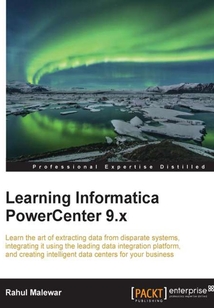舉報(bào) 

會(huì)員
Learning Informatica PowerCenter 9.x
最新章節(jié):
Index
IfyouwishtodeployInformaticainenterpriseenvironmentsandmakeacareerindatawarehousing,thenthisbookisforyou.Whetheryouareadeveloperwho'snewtoInformaticaoranexperiencedprofessional,youwilllearnallthefeaturesofInformatica.Basicknowledgeofprogramminganddatawarehouseconceptsisessential.
最新章節(jié)
- Index
- Starting the installation
- Extracting the package – opening the installable
- Downloading the Informatica PowerCenter software
- Informatica installation – the prerequisites
- The Informatica architecture
品牌:中圖公司
上架時(shí)間:2021-08-06 19:05:19
出版社:Packt Publishing
本書(shū)數(shù)字版權(quán)由中圖公司提供,并由其授權(quán)上海閱文信息技術(shù)有限公司制作發(fā)行


